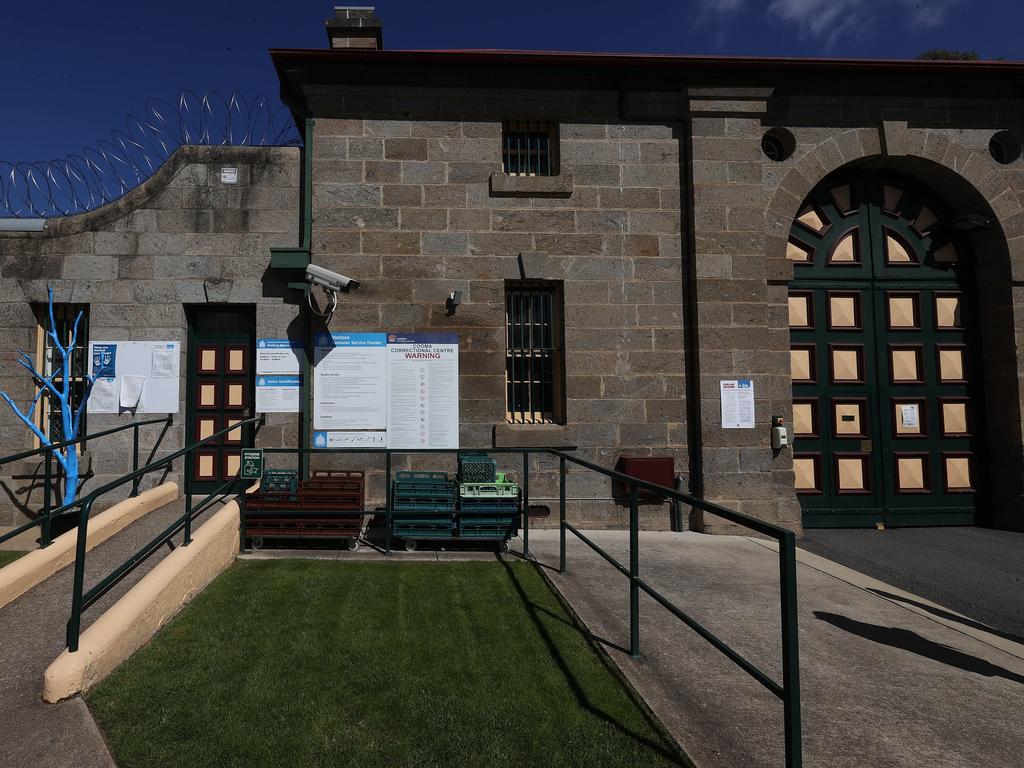Located in one of the coldest small towns in Australia, Cooma Prison holds a dark secret.
Not only was it reopened in 1957, with the specific purpose of imprisoning men for "homosexual crimes," but it was also said to be used as a human testing ground, with the ultimate goal of eradicating homosexuality. .or.sexuality from society.
“Cooma Prison is believed to have been the only hom.osek.sual prison known in the world, according to a new podcast", writes the BBC.
Until now, some prison staff say they did not know the real reason why the hom.osek.sual prisoners were separated and placed in Cooma.
Les Strzelecki started working as a custodial services officer at Cooma Prison in 1979. He believed that prisoners were sent there for their own safety.
“Cooma was a protective institution. They were in danger of being lost in the biggest cities like "Long Bay" in Sydney. he said.
But another former employee, Cliff New, claims that wasn't the real reason.
He said on an Audible podcast called "The Greatest Menace" that many psychologists and psychiatrists were being hired after the prison reopened in 1957.
“They were trying to get them on the 'right' path and they thought they could cure them. This is also the reason why the prisoners were in separate cells", said the 94-year-old.
Historical documents state that NSW Justice Minister Reg Downing took credit for the creation of bur.gut.
He told the "Sydney Morning Herald" in 1957 that, "Nowhere in Europe or America have I found any prison where homosexuals were separated from other prisoners".
A 1958 press release Downing referred to Cooma as "the only penal institution in the world, dedicated to the detention of criminals who violate the law".
"Those imprisoned in Cooma were imprisoned for being gay, or for crimes related to being gay. Homosexuality was not decriminalized in NSW until 1984.”, writes the BBC.
The draconian new laws of the state in 1955 had hit the hom.osec.suality.
They followed pressure from State Police Commissioner Colin Delaney, who, according to the then attorney general, felt "that remedial legislation was an urgent necessity to combat the evil."
"A man could be arrested simply for talking to another man. These legislative changes were very harsh on the civil liberties of people who were thought to have homosexual desires.”, historian Garry Wotherspoon tells the BBC.
The crime of hacking was punishable by 14 years in prison, while the attempted fraud lasted five years.
Both Wotherspoon and the podcast cite police evidence of how "agents provocateurs" encouraged men to commit homosexual acts.
“They used agricultural policemen to trap gay men, luring them to have sex, usually in public toilets." asserts Wotherspoon.
In 1958, the NSW government announced a committee of inquiry into "the cause and treatment of homosexuality".
“It included experts from the fields of medicine, psychiatry, penology, social and moral welfare. said in a statement.
Part of the investigative committee were representatives of religion, the penal system, as well as academics from the University of Sydney.
He names Cooma Prison as "a special institution for convicted criminals".
After finding one "scientific assessment of the problem and a possible solution", Downing is quoted as saying, "the government considers that the problem should be solved immediately".
"We know that psychiatrists asked questions like 'did your mother's authority cause you to dislike other women?' and came to the conclusion that the mother's behavior was "a major cause of hom.osek.suality", says podcast creator and journalist Patrick Abboud, who has spent years researching bu.rgun.
“We know they failed in their mission to root out homo.osek.suality, because our podcast reveals hom.osek.sual men who have ongoing relationships in bu.rg”, follows further.
It is unclear when hom.osek.sual prisoners were no longer sent to Cooma.
"Many archives were removed or destroyed," says Wotherspoon.
NSW Correctional Services and the NSW Department of Communities and Justice declined to comment on the allegations, citing their "historical nature".
Abboud, citing a 1982 statement by the Minister of Correctional Services, believes that hom.osek.sual prisoners may have been sent there until the early 1980s.
"Sexual abusers were also sent to Cooma and this further stigmatized the hom.", says Mr. Abboud. /Adapted from BBC for Labyrinth
